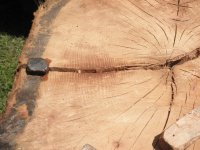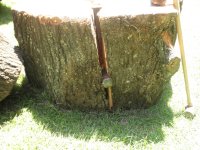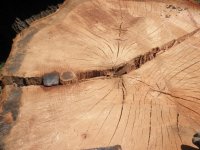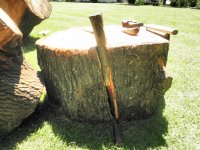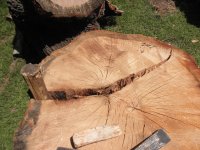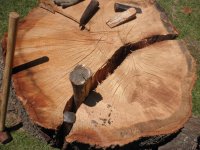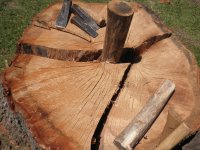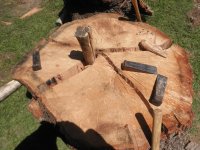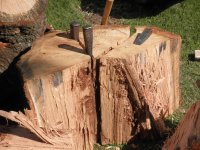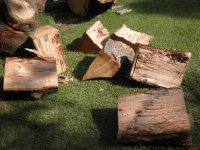Ductape:
Wow, thanks for the advice from
EXPERIENCED pros who have handled and split blocks as large as those I am facing.:thumbsup:
I don't own a hydraulic splitter, either horizontal or vertical, but I see how the vertical one would be best for this size block. How does one maneuver those big ones on the ground?:confused3: I see how it would be easier on frozen or snowy ground.
My tractor doesn't have enough ballast on the rear to lift them with the bucket and tongs (which I don't have either).
 hr3:
hr3:
And I don't own a backhoe. But if I did have it would be a great advantage to lift and place on a
splitter.
Doloe an Ted:
There are no 15 year old boys around to convince that swinging a sledge for a few hours would be a great workout and body-builder.
And
Ted you are right that there are not enough sledge handles available to make it worthwhile to use two teenagers(I have learned that like you).
I have had a bit of experience splitting oak blocks as big as 24-30 inches in diameter and two feet in length using wedges and a sledge but none the size of these monsters.
joshuabardwell right you are:
So, it is back to the old-school method which is slower but
THE WOOD WILL YIELD TO THOSE WEDGES.:thumbsup:
Here are the tools I have to work with: three steel wedges, one dogwood glut (wedge), one larger wooden glut, one 6-pound 34 inch sledge, and an ax. I also have a 1 inch by 7 feet long steel bar to help pry apart the split sections. It is amazing what these simple tools will do with patience and perseverance.
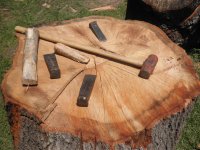
Now, I will admit that, at 75 years of age, I didn't know if I could split these large blocks but I recall seeing some old-timers split some big ones like these when I was just a kid. So I thought I would try. I will also testify that each session left me rather worn out and the hands were tight but the next session I felt stronger and my belt seemed not quite so tight. I spread out the sessions with several days or even a week between to let the muscles and hands recover.
So here is how it goes:
(see the thumbnail photos at the bottom) First, I start a
slender wedge in a developed crack near the edge of the block and drive it in until it bottoms out (the crack
will yield and begin to open up more.)
Next, drive in a larger wedge just inside the first wedge and the crack really begins to
talk to you and open up even more.
Then drive in the dogwood glut inside the last wedge to release the other wedges.
Then drive in a steel wedge on the outside near the bottom to complete the split and widen it.
Next drive in the larger wooden glut to really expand the split.
Using alternating wedges, continue to move the large wooden glut across the widening split until the split is completed across the width of the block.
Repeat these steps around the block until the sections are all free (in this pictured example there are seven sections from this block; sometimes there were nine depending on the nature of the block).
My goal was to get the blocks split into pieces that I could manage to load into the tractor FEL and move across the street to my place where I could continue to process them at my leisure (if there is such).
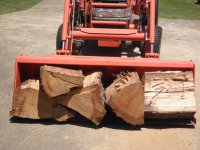
Even this bucket-full of blocks made the back of the tractor a little light even though there is a Landpride tiller on the back.

I have a
growing pile of block sections at my place now.:dance1:
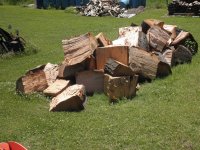
There were ten of the giant blocks to begin with and there are now two remaining awaiting those powerful wedges and sledge.

Now that I have exercised those wedges and sledge enough

maybe I will find a hydraulic splitter (that has a log lifter on it) with which to complete the process of turning these blocks into manageable firewood.
I'M TIRED but satisfied

I probably won't volunteer to take the next big tree that goes down :laughing:
I will try to remember to up update this project when the processing is complete. I, like you, am wondering just how many cords of firewood I will have stacked when this is finished.
Arkaybee



